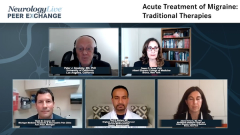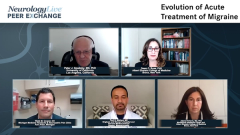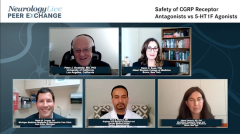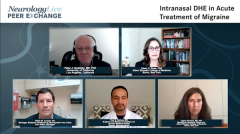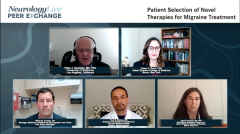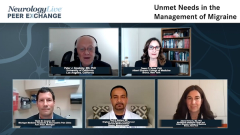
Evolution of Acute Treatment of Migraine
Episodes in this series

Exploring the current recommended approaches for selecting, combining, and sequencing acute therapies for the treatment of migraine.
Peter J. Goadsby, MD, PhD: I’m going to transition to the next segment. In this segment, I’d like to cover the recent evolution of acute therapies. When we were speaking last, we alluded to this. Jelena, set the scene for us. We’re getting later into 2020. Tell us how you think about combining, selecting, and sequencing acute therapies with all the developments that are happening.
Jelena Pavlovic, MD, PhD: It’s 2020, right? It’s been an interesting year. In terms of acute migraine therapy, it’s an exciting year because new molecules have emerged. I want to put that into context of what our patients want and how we, as headache specialists, and the American Headache Society have traditionally thought of acute migraine treatment. Then I’ll discuss the emergence of new therapies and their incorporation into our practice.
As both Wade Cooper and Paul Mathew mentioned, studies have shown that patients with migraine want rapid, sustained, complete alleviation of their migraine pain. They would like to be pain-free at 2 hours. They would like to have sustained pain relief up to 24 hours. They would like not to have adverse effects, though they’re willing to tolerate a lot. We know this because there aren’t better-available options. When there are adverse effects that they’re tolerating for the sake of pain treatment, they will often delay treatment, which we know is not the optimal way to acutely treat migraine.
In terms of what the guidelines for treatment have traditionally recommended, they have staged 3 ways of treating acute migraine. One, treat with the first-line drug, which traditionally is an NSAID [nonsteroidal anti-inflammatory drug] or a triptan. Second, treat with a backup plan with another drug. For some, that could be a triptan, for other people it could be opioids, for some it could be antiemetics.
If both a repeat of acute treatment, and the backup treatment fails, a patient would generally be recommended to go to urgent care and receive IV [intravenous] or IM [intramuscular] administration of medications in that setting. Thankfully, given the emergence of the 2 new drug classes, ditans and gepants, during the last year, we now have more options.
These options are currently being incorporated into our practice. A lot of their promise concerns the vasoconstrictive properties of triptans, and therefore some contraindications to use in people who have a history of cardiovascular disease.
Both the gepants and the ditans do not have these limitations. Thus, they provide much better options, and they do have various profiles of the kind of patient in whom we would use 1 or the other. They do also have a much better tolerability profile with significantly fewer adverse effects. At this point, they have a safety profile that is very favorable, though they have been on the market for a somewhat limited time.
Peter J. Goadsby, MD, PhD: They’re exciting developments.
Newsletter
Keep your finger on the pulse of neurology—subscribe to NeurologyLive for expert interviews, new data, and breakthrough treatment updates.

